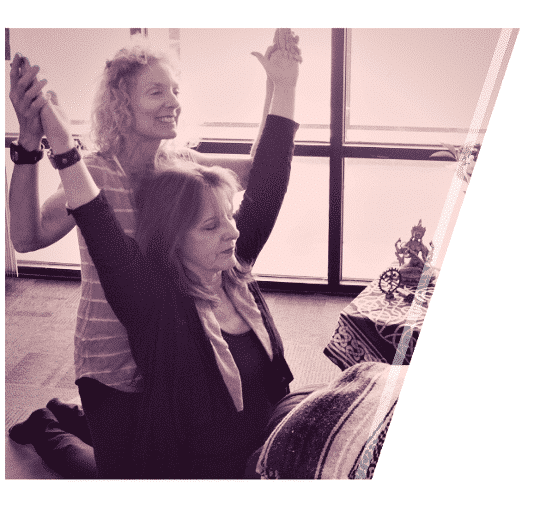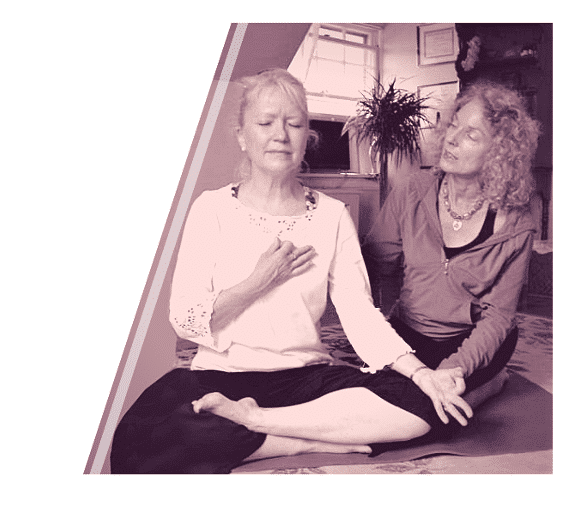Our yoga practices can give us a window through the depressed mood, even if initially, it’s only for the few moments we are practicing. As we continue to practice, that window widens and stays open longer, and we begin to see that our true nature is not depressed, that deep within, beneath the constrictions of our current mood, we are whole. Little by little, our practices begin to release those constricting thoughts and emotions, and we feel better. Many of us, including me in 1989, have been able to, with supervision, slowly come off medication. Some of us can take less medication once we’ve established a daily practice. I tell my students, if you’re taking medication, bless it. It’s what is helping you get to your yoga mat!
Basic Guidelines: Yoga for Depression
 When practicing asana (postures):
When practicing asana (postures):
If depression is present, to meet the mood, begin slowly and increase to more dynamic movements, practicing with awareness of breath (4:4 count recommended) and attention to specific body sensations. Practice all movements (back bending, forward bending, side stretching, twists and inversions) with emphasis on back bending poses.
End with a relaxation that increases body awareness—practices that include a body scan, like yoga nidra or a tense and relax exercise. When we pay attention to body sensations, we increase mindful presence. The mind is a time traveler, but the body is always present.
When practicing pranayama breathing exercises:
If depression is present, meet the mood by beginning slowly, and welcome the breath wherever it lands. Invite the breath to deepen, as is accessible for you. Build the energy by adding a faster breathing practice like Bellows Breath (one breath per second) or a standing breathing practice like Pulling Prana. Find these on my Breathe to Beat the Blues CD, available here. After a more rapid breathing exercise, no matter the presenting mood, sense into what is tingling in your face, your hands, your palms, your fingertips. The body is always present. This helps you remain in mindful presence.
Ground the experience by inhaling to the crown, “I am.” Exhaling to the feet (or the seat) here.”
When practicing meditation:
Reduce the rumination that accompanies both anxiety and depression by anchoring the mind with a meditation technique that “gives the mind a bone.” (mantra, mudra, pranayama, bhavana, visual imagery) Find these meditation techniques on the LifeForce Yoga Chakra Clearing Meditation CD, available here.
Build the muscle of mindfulness practice slowly with shorter periods of silence, building to longer periods of silence (watching the breath, focused awareness, etc) after first anchoring the mind with a technique recommended above. This will help mitigate the negative self-talk that often accompanies depression and anxiety. Download the LifeForce Yoga CCM Energizing-Grounding instructions, here.
It is advisable to practice movement before sitting to meditate. Try the LifeForce Yoga to Beat the Blues, Level 1 or 2, DVD or downloads, available here.
Nada Yoga (Sound Yoga)
Integrating non-sectarian mantra into movement can help deepen the breath. In general, consonant tones are useful for depression (lam, vam, ram, yam, ham, om, ng). These tones are also found on the LifeForce Yoga Chakra Clearing Meditation CD, available here.
Try the free Seated Practice to Energize on my YouTube channel, here.

